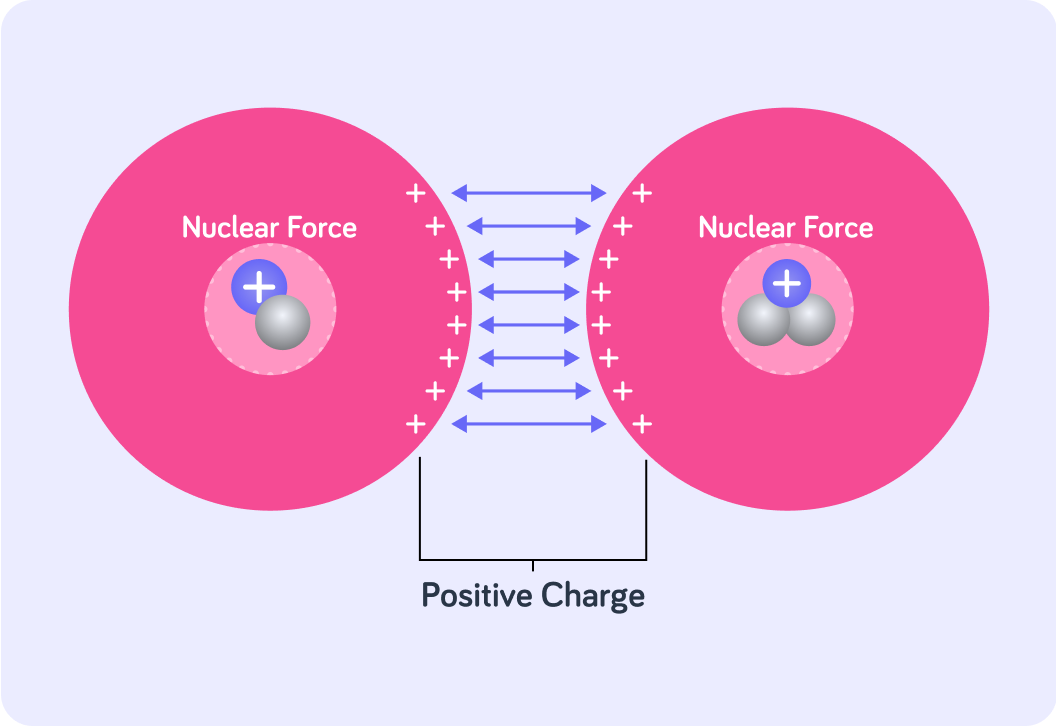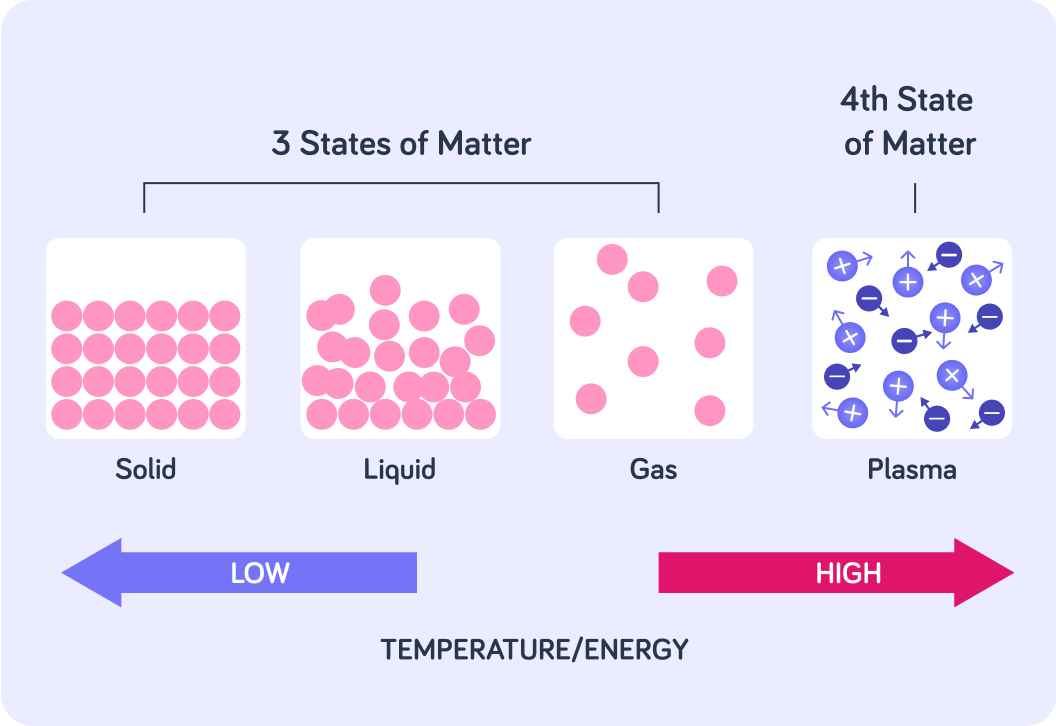YOU ARE LEARNING:
Temperature Requirements

Temperature Requirements
For fusion to occur there needs to be enough heat to overcome the electrostatic repulsion between nuclei.
Nuclear fusion requires extremely ________ temperatures!

Nuclear fusion does not happen and cannot happen at low temperatures. This lesson looks at why that is.
First of all, which particles make up the nucleus of an atom?

You can select multiple answers
The nucleus of an atom is made up of protons and neutrons, so the overall charge of a nucleus of any atom is ______________.

Now, do like charges attract or repel each other?

So what will happen when two nuclei come close together?

In nuclear fusion, two hydrogen nuclei come together and fuse.
However, both nuclei have a positive charge so they have a tendency to repel each other! So how do they actually fuse?

To achieve fusion, certain conditions must be present to overcome this repulsion force.
One of those conditions is extremely high temperatures (another is extremely high pressure).

Have a guess at this one! What do you think we call the force of repulsion between two like charges?

Electrostatic force
You might have heard the term electrostatic force before in the context of ionic bonding.
Ions with an opposing charge are held together because of an electrostatic attraction.
We see the opposite between nuclei because they have the same charge (positive).
So between nuclei there is electrostatic repulsion. For nuclear fusion to happen, this force needs to be overcome.
So in essence, electrostatic force is the attraction or repulsion of particles based on...

Charges are similar to magnetic poles. Just like with two positive nuclei, the north poles of two bar magnets will repel each other. What can you do with the two bar magnets to push them together? Pick all the options you think are correct.

You can select multiple answers
Like with the bar magnets, you can use speed to overcome the electrostatic repulsion between nuclei. It has to be very very high speed though! What do you think it is that increases the speed of the particles?

Tremendously high temperatures can accelerate nuclei to high enough speeds that they are able to fuse together before the repulsive forces stop it from happening. This is why isotopes of hydrogen can fuse together at the Sun's core, where temperatures reach around 15,000,000∘C!
For nuclei to have enough energy to overcome electrostatic repulsion and fuse together, they would need to be in a hot gas or plasma.
The Sun is a big ball of gas and plasma, with a core of around 15,000,000∘C!

Around 91% of the Sun is composed of the gas that fuels the nuclear fusion in its core. What element is that?


As the hydrogen in the Sun's core heats up, individual atoms break apart, turning gas into plasma. From the diagram, you can see which subatomic particle is separated from the atoms?


If you superheat a gas, the atoms will have so much energy that its electrons become so excited that they "shed off"!
In the Sun's core, temperatures are so high that the fuel for nuclear fusion is in fact plasma. It has such high energy and the particles are moving so fast that they are able to overcome electrostatic repulsion and nuclear fusion can happen.

At the core of the Sun, fusion can happen at 15 million degrees Celsius, but only because the Sun also has an immense gravitational force that helps nuclear fusion. On Earth we don't have that same gravitational force, so temperatures would have to be even higher for nuclear fusion to occur. How high do you think?

In fact, scientists have managed to induce nuclear fusion on Earth. However, it is not being used for electricity generation, even though it produces lots of energy. Why do you think that is?

Summary
Atomic nuclei are positively charged.
This means there exists an electrostatic repulsion between them. For nuclear fusion to happen, this force of repulsion must be overcome.
Nuclear fusion requires extremely high temperatures
Nuclear fusion occurs inside the Sun's core at temperatures of 15,000,000∘C as well as an immense gravitational force, allowing atomic nuclei to smash together hard enough that they fuse.
Inside the Sun's core, the high temperatures give huge amounts of energy to the particles.
This creates plasma where the particles move so fast that electrons actually "shed off" the atoms! These high speeds overcome the force of the electrostatic repulsion between nuclei.
On Earth, we don't have the same immense gravitational force as in the core of the Sun, so we need even higher temperatures to induce nuclear fusion.
In fact, we need around 150,000,000°C.
This has been achieved!
The Jet reactor in England has induced nuclear fusion at temperatures 10 times hotter than the Sun.
We don't have nuclear fusion reactors for generating electricity, though.
This is because the energy needed to create the temperatures is more than the energy we can generate, so it is not very economical.
